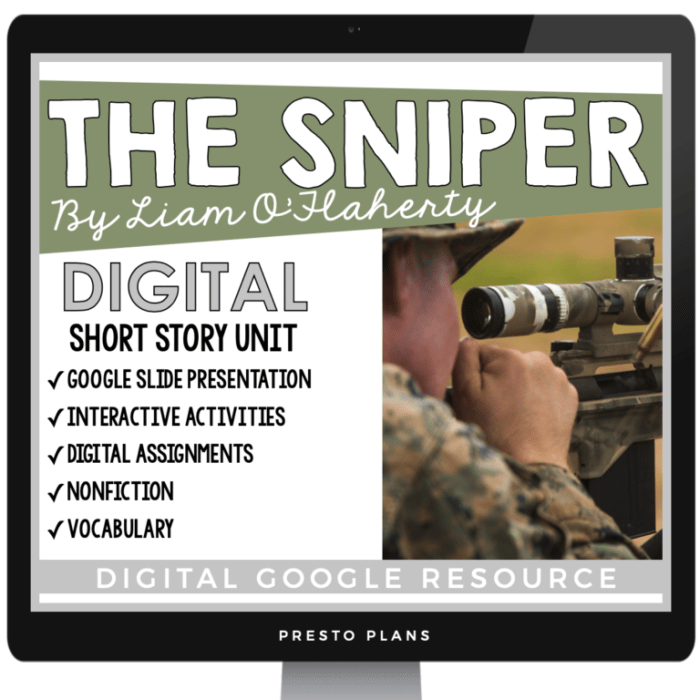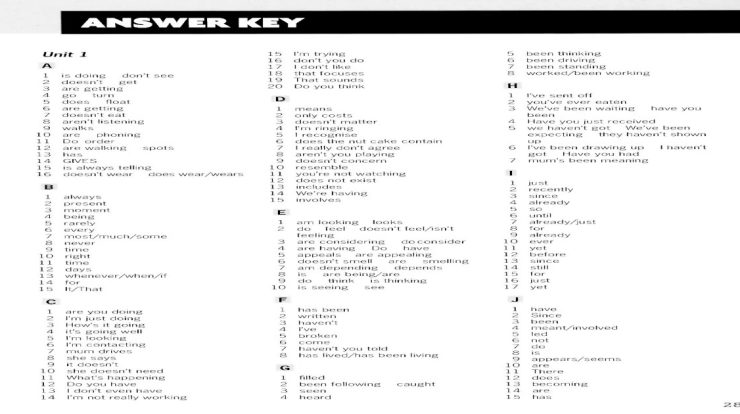The sniper by liam o’flaherty questions – Delve into the captivating world of “The Sniper” by Liam O’Flaherty, a literary masterpiece that explores the complexities of human nature amidst the turmoil of war. Through an in-depth analysis of characters, setting, symbolism, and narrative techniques, this comprehensive guide unlocks the profound insights embedded within O’Flaherty’s poignant tale.
Uncover the motivations, conflicts, and psychological struggles of the sniper, a enigmatic figure caught in a deadly game of cat and mouse. Explore the significance of the setting, a war-torn city that mirrors the protagonist’s inner turmoil. Analyze the use of symbolism, particularly the opposing buildings that represent the sniper’s conflicting loyalties.
Character Analysis: The Sniper By Liam O’flaherty Questions

The Sniper is a complex and enigmatic character who epitomizes the brutality and futility of war. His motivations are driven by a deep-seated hatred for the opposing side and a misguided sense of duty.
Psychological State
The Sniper’s psychological state is characterized by intense fear, isolation, and desperation. He is haunted by the realization of his own mortality and the senselessness of the conflict. The prolonged isolation and lack of human contact have taken a toll on his psyche, leaving him emotionally numb and detached.
Conflicts
The Sniper faces both internal and external conflicts. Internally, he struggles with his conscience and the realization of the horrors he has committed. Externally, he must confront the enemy sniper who poses a constant threat to his life.
Setting and Symbolism
Setting
The story is set during the Irish Civil War, in a desolate cityscape torn apart by violence and chaos. The Sniper’s vantage point atop a ruined building symbolizes his isolation and detachment from the world below.
Symbolism, The sniper by liam o’flaherty questions
The opposing buildings represent the two warring factions, highlighting the futility and absurdity of the conflict. The sniper’s rifle becomes a symbol of his power and destruction, while the lamp represents the fragile hope that still flickers amidst the darkness.
Theme and Conflict
Themes
The story explores several themes, including the brutality of war, the futility of violence, and the psychological toll of conflict.
Conflicts
The Sniper faces both internal and external conflicts. Internally, he struggles with his conscience and the realization of the horrors he has committed. Externally, he must confront the enemy sniper who poses a constant threat to his life.
Style and Narrative Technique
Writing Style
O’Flaherty employs a concise and evocative writing style, using short, sharp sentences to create a sense of urgency and immediacy. The story is narrated from the sniper’s perspective, providing a deeply personal and subjective account of the events.
Narrative Technique
The story uses a non-linear narrative structure, shifting between the present and past to build suspense and highlight the psychological turmoil of the sniper.
Historical and Social Context
Historical Context
The story is set during the Irish Civil War (1922-1923), a bitter conflict between the Irish Free State and the Irish Republican Army (IRA). The war left a deep scar on Irish society, dividing families and communities.
Social Context
The story reflects the social and political tensions of the time, particularly the deep divisions within Irish society and the rise of nationalism and extremism.
Common Queries
What is the central conflict faced by the sniper?
The sniper is torn between his duty as a soldier and his moral qualms about killing.
How does the setting contribute to the story’s atmosphere?
The war-torn city creates a sense of chaos and danger, reflecting the sniper’s inner turmoil.
What is the significance of the opposing buildings?
They represent the sniper’s conflicting loyalties and the psychological divide between the two sides of the conflict.
